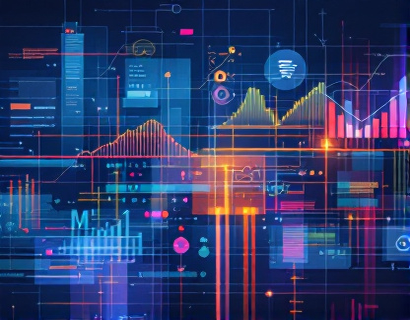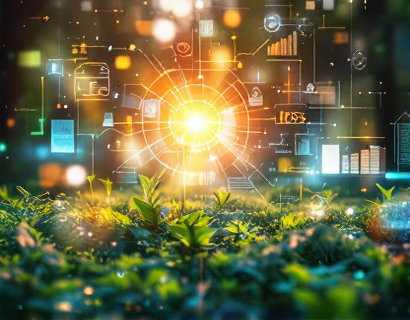Advanced Analytics for Sustainable Horticulture: Optimizing Resource Management and Enhancing Crop Yields
In recent years, the integration of advanced analytics in horticulture has emerged as a pivotal strategy for achieving sustainability and enhancing agricultural productivity. The application of sophisticated environmental analytics software is transforming the way farmers and horticulturists manage resources and optimize crop yields. This shift towards data-driven decision-making not only boosts efficiency but also promotes eco-friendly practices, contributing to a healthier planet. The following discussion delves into the ways in which advanced analytics is revolutionizing sustainable horticulture, focusing on resource optimization and yield enhancement.
Understanding Advanced Analytics in Horticulture
Advanced analytics in horticulture involves the use of complex data analysis techniques to process and interpret large volumes of agricultural data. This data can include soil moisture levels, weather patterns, plant health metrics, and more. By leveraging these insights, horticulturists can make informed decisions that lead to more sustainable and productive farming practices. The core benefit of advanced analytics lies in its ability to provide real-time, actionable insights that traditional methods cannot offer.
Optimizing Resource Management
One of the most significant impacts of advanced analytics in horticulture is the optimization of resource management. Traditional farming methods often lead to overuse or underuse of resources such as water, fertilizers, and pesticides. Advanced analytics helps in precisely determining the optimal amounts and timing for these resources, reducing waste and environmental impact. For instance, soil moisture sensors combined with weather forecasts can predict the exact amount of water needed for irrigation, ensuring that plants receive the right amount without excess.
Water management is a critical aspect of sustainable horticulture. Advanced analytics enables the creation of smart irrigation systems that adjust water delivery based on real-time data. These systems can detect soil moisture levels and adjust watering schedules accordingly, preventing both overwatering and underwatering. This not only conserves water but also ensures that plants receive the optimal amount of moisture, leading to healthier growth and higher yields.
Enhancing Crop Yields
Enhancing crop yields is a primary goal of modern horticulture, and advanced analytics plays a crucial role in achieving this objective. By analyzing historical and real-time data, farmers can identify patterns and trends that influence crop performance. For example, data on temperature, humidity, and light exposure can be used to optimize growing conditions for specific crops. This data-driven approach allows for the fine-tuning of environmental factors to maximize plant growth and productivity.
Precision agriculture, a subset of advanced analytics, involves the use of GPS and other technologies to apply inputs such as fertilizers and pesticides with pinpoint accuracy. This targeted approach ensures that resources are used efficiently, reducing costs and environmental impact while increasing crop yields. For instance, variable rate technology (VRT) allows farmers to apply different amounts of fertilizer based on the specific needs of different areas within a field, leading to more uniform and higher crop yields.
Promoting Sustainable Practices
Sustainability is at the heart of advanced analytics in horticulture. By providing detailed insights into resource use and environmental impact, these tools help farmers adopt practices that are both productive and eco-friendly. For example, analytics can identify the most effective timing for planting and harvesting, reducing the need for additional resources and minimizing the carbon footprint associated with farming operations.
Moreover, advanced analytics can help in the management of pest and disease control. By monitoring plant health and environmental conditions, farmers can detect early signs of pest infestations or disease outbreaks. This early detection allows for timely intervention using the least harmful methods, reducing the need for chemical pesticides and promoting biological control methods. This not only protects the environment but also ensures the safety of the produce.
Case Studies and Real-World Applications
Several case studies demonstrate the positive impact of advanced analytics on sustainable horticulture. In one example, a large-scale vegetable farm implemented a data analytics system that integrated soil sensors, weather stations, and drone imagery. The system provided real-time data on soil moisture, nutrient levels, and plant health. As a result, the farm reduced water usage by 30% and increased crop yields by 20% within a year. The precise application of resources not only saved costs but also minimized the environmental impact.
Another instance involves a greenhouse operation that used advanced analytics to optimize light and temperature conditions for various crops. By analyzing data from sensors and historical growth patterns, the operation adjusted the greenhouse environment to maximize photosynthesis and plant growth. This led to a 15% increase in yield and a significant reduction in energy consumption, as the heating and cooling systems were more efficiently managed.
Challenges and Considerations
While the benefits of advanced analytics in horticulture are clear, there are several challenges and considerations that need to be addressed. One of the primary challenges is the initial cost of implementing these technologies. Advanced analytics systems can be expensive, and not all farmers may have the financial resources to invest in them. However, the long-term benefits in terms of cost savings and increased yields often justify the initial investment.
Another challenge is the need for technical expertise to effectively use and interpret the data provided by these systems. Farmers and horticulturists must be trained to understand and act on the insights generated by analytics tools. This requires a shift in mindset and skill set, but many agricultural institutions and organizations are now offering training programs to bridge this gap.
Future Trends and Innovations
The future of advanced analytics in horticulture looks promising, with ongoing innovations set to further enhance its capabilities. One area of development is the integration of artificial intelligence (AI) and machine learning (ML) into analytics platforms. AI can analyze vast amounts of data to identify complex patterns and make predictive models, enabling even more precise and proactive management of horticultural operations. For example, AI-driven systems can predict optimal planting times based on historical weather data and soil conditions, maximizing the chances of successful crop growth.
Additionally, the Internet of Things (IoT) is playing an increasingly important role in connected agriculture. IoT devices, such as smart sensors and drones, can collect and transmit data in real-time, providing a comprehensive view of the farm's conditions. This continuous flow of data allows for immediate adjustments and optimizations, further enhancing resource management and crop yields.
Conclusion
Advanced analytics is transforming sustainable horticulture by optimizing resource management and enhancing crop yields through data-driven insights. The adoption of these technologies not only leads to increased productivity and cost savings but also promotes environmentally friendly practices, contributing to a healthier planet. As the field continues to evolve, the integration of AI, ML, and IoT will further revolutionize the way we approach agriculture, ensuring a sustainable and prosperous future for horticulture.










































